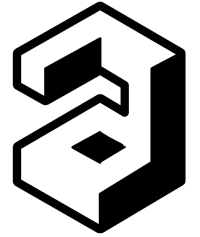Vol 4, No 1 (2012)
Published: 01.06.2012.
Authors in this issue:
Dejan Javorac, Dragan Kurbalija, Dragana Golik-Perić, Igor Beretić, Jelena Šakotić Kurbalija, Marian Vanderka, Nenad Sudarov, Ognjen Pedja Tutorov, Tomaš Kampmiller, Vojin Jovančević, Živko Kalentić,
Edited by:
Danilo Radanović
Author guidelines
Editorial Policy
35
Issues213
ArticlesBECOME A REVIEWER
We invite you to become an Exercise and Quality of Life reviewer.
BECOME GUEST EDITOR
Exercise and Quality of Life runs special issues to create collections of papers on specific topics.
Archive
See all
Volume 18, Issue 1, 2026
Volume 17, Issue 2, 2025
Volume 17, Issue 1, 2025
Volume 16, Issue 3, 2024
01.06.2012.
Original scientific paper
SPOUSAL APPROVAL OF RECREATION AS AN INDICATOR OF MARRIAGE QUALITY AND STABILITY
The aim of the study was to determine if and to what extent equal point of view of
spouses regarding recreation can be seen as a significant indicator of the quality and stability
of marital relationship in our society. For this purpose 436 women, who live in marriage or
non-marital cohabitation, aged 19- 64, were tested. The differences among the tested women
who share the same attitude about recreation with their spouses and those who do not, were
tested by discriminatory analysis regarding the following: different demographic variables, general satisfaction with the marriage and marital relationship, different aspects of the quality
of the marital relationship, style of affectional bond, marital locus of control, differences in
judgement of personal and spouseís values, presence of stressful events, strategies for
overcoming the stress, stability of the marriage and intention to seek professional
psychological help. Statistically significant discriminatory factor (rc=0.54; p= 0.00) was
obtained which is interpreted as harmonious in contrast to the conflict prone marital
relationship. The main conclusion of the research is that the spousal approval of recreation
represents a good indicator of general harmony in a marital relationship.
Jelena Šakotić Kurbalija, Dragan Kurbalija
01.06.2012.
Original scientific paper
AGE-RELATED CHANGES OF RUNNING STRIDE KINEMATICS IN 7 TO 18 YEAR - OLD YOUTH
The research deals with cross-section analysis of ontogenetic characteristics of basic
kinematic parameters of the running stride in terms of age and gender from 7 to 18 years of
age. There were monitored: average velocity, stride frequency and length, duration of support
and flying phase, as well as other derived indicators at 10 m with 15 m flying start. Sample
consisted of 1299 male and 1288 female students of elementary and high schools in
Bratislava. Authors determined high age dependency of running speed and stride length on
age. On the other hand, there was high ontogenetic stability of the indicators (stride
frequency, duration of support and flying phase) in the population of 7 to 18 year-old youth. Ontogenetically stable parameters deteriorated partially in prepubescent and at the beginning
of the pubescent period in the age 11 ñ 15. This relates to rapid growth of body height and
weight and deterioration of biomechanical and coordination conditions of an organism. Those
finding lead the authors to the conclusion, that ontogenetically stable indicators comprise so
called dispositional factors in evaluating the rate of talent for running speed.
Marian Vanderka, Tomaš Kampmiller
01.06.2012.
Original scientific paper
RELATIONSHIP BETWEEN MORPHOLOGICAL CHARACTERISTICS AND MOTOR ABILITIES OF BOYS AND GIRLS AGED FROM 11-14 IN THE PROVINCE OF VOJVODINA
The aim of this study was to examine the relationship between morphological
characteristics and motor abilities of boys and girls aged from 11 to 14 so that the process of
physical education could be in line with the dynamics of growth and development as well as
the differences between the sexes. The total sample consisted of 730 subjects, divided into
four age groups of 11, 12, 13 and 14. Eight motor tests were conducted and 9 anthropometric
measures were taken. The boys of all ages achieved better results in tests of coordination, repetitive and explosive power, while girls of all age groups scored better in flexibility tests. The largest differences between the sexes at the ages of 11 and 12 years were the results of
variables evaluating motor abilities. At the age of 13, a significant difference in skinfold
thickness was found in favor of girls and at the age of 14 in the voluminousness in favor of
boys. In boys aged from 13 and 14, the increase in body volume was negatively correlated
with the increase in skinfold thickness, indicating that the increase of voluminousness is
caused by the increase of muscle mass. It is therefore concluded that the linear increase of the
differences in motor performance tests under 14 years of age is caused by increased muscle
mass in boys, especially in tests where achievement depends on the strength and production
of force.
Igor Beretić
01.06.2012.
Original scientific paper
DIFFERENCES IN SOME MORPHOLOGICAL CHARACTERISTICS AND THIGH MUSCLE FORCE OF BOUNCE LEG BETWEEN FOOTBALL PLAYERS AND GOALKEEPERS
The aim of this study is to determine the differences in certain morphological
characteristics and thigh muscle force of bounce leg between football players and
goalkeepers. The examined group consisted of 15 goalkeepers and 14 players, aged 15 ñ 18
years, from Vojvodina cadet league. Five parameters were tested by means of isokinetic
dynamometer, and 6 morphological factors were measured. The differences between sub
samples were gained by multivariable and univariable analysis of variance. Multivariable
analysis was used to determine significant difference at the level (p =.00), and we determined
statistically significant difference on individual basis in body height and in muscle mass
percentage. Almost equal results in thigh muscle force of bounce leg among the subjects and
no difference in other variables can be explained by identical training process for players and
goalkeepers. The data gathered demonstrate that in the future it will be necessary to
implement different training process, specially designed for goalkeepers.
Živko Kalentić, Dragana Golik-Perić, Nenad Sudarov, Vojin Jovančević
01.06.2012.
Original scientific paper
INFLUENCE OF COMPLEX TRAINING ON EXPLOSIVE POWER OF KNEE EXTENSOR MUSCLES OF BASKETBALL JUNIORS
The aim of this paper is to establish the effects of an experimental treatment, so called
ìRussian complexî on explosive leg power of the basketball players belonging to the
experimental group. Explosive leg power was measured on the sample consisting of 40
basketball players from the Serbian league: 20 basketball players from the experimental group
and 20 from the control group, all aged between 16 and 18. The experimental group was the
subject of the experimental treatment, so called ìRussian complexî, which included gym
exercises and took place twice a week during the period of ten weeks. The results of the
univariate analysis of covariance indicated that the experimental programme led to a
statistically significant improvement of all three motor variables used for the evaluation of
explosive leg power (Sargent Jump Test, Standing Triple Jump and Standing Jump) in the
experimental group of examinees, in comparison to the control group.
Dejan Javorac
01.06.2012.
Original scientific paper
Heart rate changes (HR) and oxygen saturation in blood (AO2) dependency in relation to the static apnea duration (STA)
In static apnea discipline diver holds the breath in standstill condition. Diving
reflex represents a reaction of the body to apnea dive with responses of effectors:
bradycardia, peripheral vasoconstriction, splenic contractions. Physiological significance
of these body changes implies reduction of oxygen consumption. The main objective of
this research is to examine characteristics of connection between heart rate changes (HR)
and changes in oxygen saturation in blood (SaO2) during apnea. A group of 15 breath
hold divers was examined. Tests were conducted during static apnea, heart rate (HR) was
measured as well as oxygen saturation in blood (SaO2). The changes in HR and SaO2
during apnea demonstrated statistically significant correlation. Higher HR values in apnea
indicate higher mental tonus during apnea which is followed by higher muscle tonus. The
consequence is a greater consumption of O2 and lower values of SaO2min. There is
statistically significant correlation between intensity of diving reflex activation and
oxygen conserving (less reduction of SaO2).
Ognjen Pedja Tutorov

























